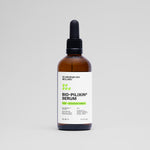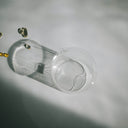Hair transplants can be life-changing for anyone dealing with hair loss.
While the idea of regaining a full head of hair sounds promising, one key question lingers: How long do the results actually last?
In this article, we’ll break it down, answering your burning questions and giving you the tools to make informed decisions about hair restoration.
Table of content
What is a hair transplant?
A hair transplant is a surgical procedure that moves healthy hair follicles from one part of your scalp (donor area) to another where hair is thinning or absent. The transplanted follicles continue to grow hair naturally, blending seamlessly with your existing hair.
In simpler terms, it’s like rearranging your hair to fill in the gaps. Modern techniques make the results look natural, and the transplanted hair grows like your regular hair—because it is!
This procedure is especially beneficial for those with pattern baldness or hair loss due to injury.
Hair transplants have evolved significantly in recent years, offering less invasive methods and quicker recovery times.
Whether you’re aiming to restore your hairline or add density to thinning areas, this procedure is a reliable solution. But, like any medical procedure, understanding the process and aftercare is key to long-lasting results.
As your leading source for hair health information over the past 4 years, we never compromise on accuracy. When it comes to your health, you deserve information you can truly rely on - and earning your trust is our top priority.
Here's how Scandinavian Biolabs ensures every piece of content meets the highest standards of accuracy and integrity:
- Credentialed Experts: Our reviewers are actively practicing doctors and medical researchers
- Stringent Reviews: Content undergoes rigorous editing by subject specialists and review by a practicing doctor.
- Evidence-Based: We rely on well-established research from trusted scientific sources like peer-reviewed journals and health authorities.
- Full Transparency: Our editorial standards, writer credentials, reviewer credentials, correction process, and funding are all publicly documented.
- Independent Voice: While we do promote products, we operate in a vacuum to business operations. Our main goal is just an unwavering commitment to providing medically-sound guidance.
You can count on Scandinavian Biolabs to consistently deliver the trustworthy health information you deserve. Read our Editorial Standards.
What are the different types of hair transplants?

Hair transplants can be performed using three main methods: FUE, FUT, and DHI. Each method has its advantages, and the choice depends on your specific needs and preferences.
FUE (Follicular Unit Extraction)
FUE (Follicular Unit Extraction) is a minimally invasive hair transplant method where individual hair follicles are removed from the donor area and implanted into thinning spots.
It leaves tiny, barely visible scars and has a faster recovery time, making it ideal for those who prefer short hairstyles or want a less invasive procedure.
FUT (Follicular Unit Transplantation)
FUT (Follicular Unit Transplantation) involves removing a strip of skin from the back of the scalp to harvest hair follicles.
These follicles are then implanted into the recipient area. While FUT can cover larger areas in one session, it leaves a linear scar, which may be noticeable with shorter hairstyles.
DHI (Direct Hair Implantation)
DHI (Direct Hair Implantation) is a more precise and modern technique using a pen-like tool to implant hair follicles directly after extraction.
Unlike FUE, it skips the step of making recipient site incisions, allowing for faster placement and potentially less trauma to the scalp.
How long do hair transplants last?
Hair transplants are considered a long-term solution to hair loss, with results often lasting 10 years or more. With proper aftercare and maintenance, the transplanted follicles can continue growing for a lifetime.
The longevity of a hair transplant depends on factors such as genetics, age, and ongoing hair care. While the transplanted hair is permanent, surrounding natural hair may continue to thin, sometimes requiring additional treatments or follow-up procedures.
Key points to keep in mind:
- Transplanted hair follicles are permanent because they are resistant to the hormone DHT, which causes baldness.
- Natural hair surrounding the transplant may still thin over time, potentially affecting overall appearance.
- Maintaining results: Regular use of DHT blockers like finasteride and treatments like PRP therapy can prolong results.
How to choose the right surgeon and clinic for a hair transplant
Finding the right surgeon and clinic is one of the most important steps in your hair transplant journey. It’s not just about skill—it’s about trust and long-term results.
Here are a few things to look for:
- Credentials matter: Check if the surgeon is board-certified and affiliated with organizations like ISHRS (International Society of Hair Restoration Surgery).
- Experience counts: Look for surgeons with years of experience and plenty of before-and-after photos.
- Clinic standards: Make sure the clinic is licensed, uses modern equipment, and follows strict hygiene practices.
- Consultations are key: A good surgeon will take time to understand your goals and explain realistic outcomes.
- Aftercare support: Choose clinics that provide clear post-surgery instructions and follow-ups to track progress.
- Read reviews: Real patient feedback can tell you a lot about the surgeon’s reputation and customer service.
What are the recovery timeline and hair growth phases?

Recovery after a hair transplant happens in stages. In the first 1–3 months, shedding of the transplanted hair is common. While it might feel alarming, this is completely normal and part of the process.
By months 4–6, new hair growth typically begins, gradually filling in the treated areas. Most patients see noticeable improvements in density and texture by month 12, with full results usually visible after 12–18 months.
Proper care during recovery, including avoiding harsh shampoos and excessive heat, helps protect the transplanted follicles and encourages healthy growth.
What factors influence the longevity of a hair transplant?
The lifespan of a hair transplant depends on several factors, including genetics and ongoing hair care. Here are some key influences:
- Surgeon expertise: Precise placement of follicles affects long-term results.
- Age and genetics: Younger patients may experience continued natural hair loss over time.
- Medications and treatments: Ongoing use of DHT blockers or PRP therapy can prevent further thinning.
- Lifestyle habits: Stress, diet, and scalp health play a role in maintaining results.
- Hairstyling practices: Tight hairstyles can damage follicles and cause traction alopecia.
How to maintain and prolong results
Keeping your transplanted hair healthy requires ongoing care. Here are some ways to help maintain results:
Medications
Medications can slow further hair loss and support healthy growth.
- Finasteride and Dutasteride: Block DHT, the hormone responsible for hair loss.
- Minoxidil: Improves blood flow to hair follicles, promoting growth.
- Biotin supplements: Support hair strength and overall health.
Advanced therapies
Modern treatments can enhance results and stimulate growth.
- PRP (Platelet-Rich Plasma): Uses your own blood to deliver growth factors to hair follicles.
- Microneedling: Boosts scalp circulation and improves absorption of treatments.
- LLLT (Low-Level Laser Therapy): Stimulates hair follicles with light energy.
Daily care tips
Simple daily habits can make a big difference in maintaining results.
- Use gentle shampoos: Avoid harsh chemicals that strip natural oils.
- Avoid tight hairstyles: Reduce stress on follicles to prevent damage.
- Stay hydrated and eat well: Support hair health with a balanced diet rich in vitamins and minerals.
- Protect your scalp: Limit sun exposure and wear hats when outdoors for extended periods.
A better non-invasive alternative to hair transplants

If surgery isn’t for you, there are effective, non-invasive options like Bio-Pilixin Activation Serum. Designed to support hair growth and reduce shedding, it’s a drug-free solution that fits easily into your daily routine.
Bio-Pilixin uses advanced stem cell technology to deliver plant-based growth factors directly to hair follicles, creating an ideal environment for hair to thrive. It’s clinically tested, with 93% of users reporting a reduction in hair loss after 150 days.
The serum is safe for daily use and doesn’t come with the side effects often associated with medications. Most users start noticing less hair fall in as little as 45 days, with visible improvements in density by day 150.
For those looking to avoid surgery, Bio-Pilixin offers a low-commitment alternative backed by science. Plus, with a 150-day money-back guarantee, it’s a risk-free option worth considering.
Conclusion
Hair transplants can last for years, often a lifetime, with the right care and maintenance.
While the recovery process requires patience, treatments like medications and PRP can help preserve results. Choosing an experienced surgeon and following a solid aftercare routine is key to long-term success.
If you’re not ready for surgery, Bio-Pilixin Activation Serum is a proven alternative to support healthy hair growth without invasive procedures.
Give it a try—your hair might thank you later!
References:





